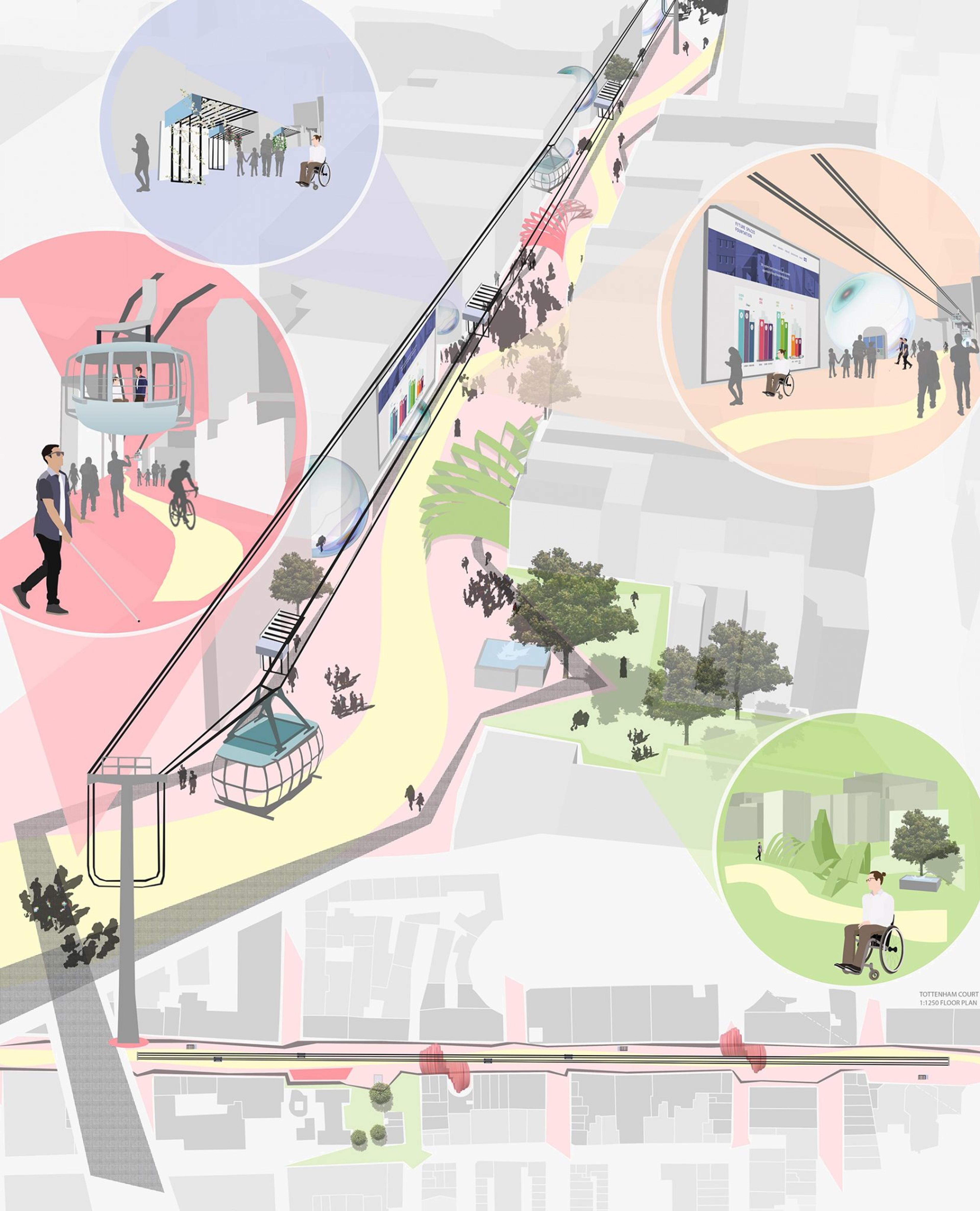Disability
Birmingham City University
Lucy Gakunga, Maariyah Mahmood, Chardonnaire Martin, Sehama Nuur, Thomas Rowntree
The stigma and exclusion surrounding disability impede on our placemaking efforts. Too often we revert to the default ‘able-bodied’ human as the template for designing our cities. But everyone should be able to freely experience space without barriers to mobility, connectivity or communication. It’s imperative that we create environments with possibilities for social interactions that help dissolve the hierarchy between able-bodied people and those with disabilities.
Our proposal identifies the points of convergence in which humans, regardless of ability, are affected in terms of mobility, connectivity and communication, and suggests a series of interventions, each of which build towards a new appraisal of our sensory and physical capacity to engage in social space. Through architecture that includes a wider diversity of sensory systems, we can imagine how technology such as haptics, olfactics, audio and optics can help people experience the street in ways that are both liberating and fulfilling.
The idea is to blur the social boundaries between able-bodied and disabled members of society. Our design encourages people to see disability as a component of inclusive design. Our proposal is based on London’s Tottenham Court Road but could be replicated anywhere across the city.
